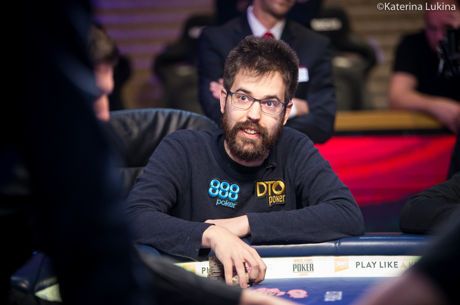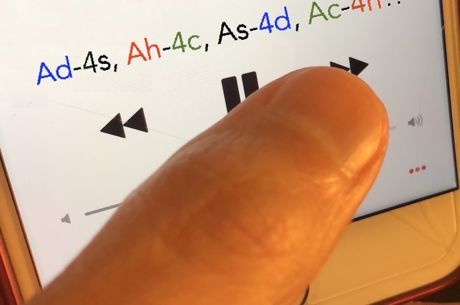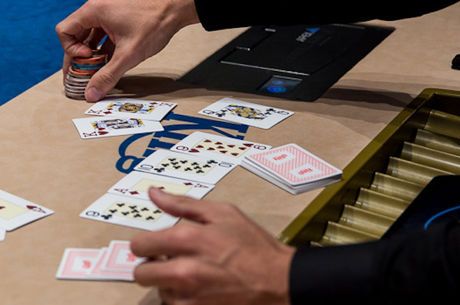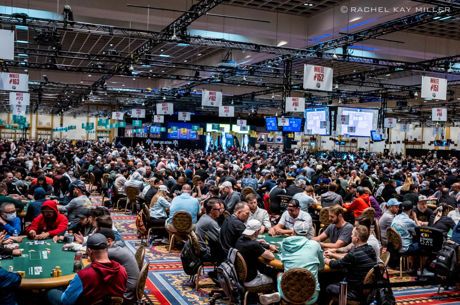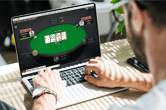Why Small Continuation Bets Work Well in Passive Poker Games
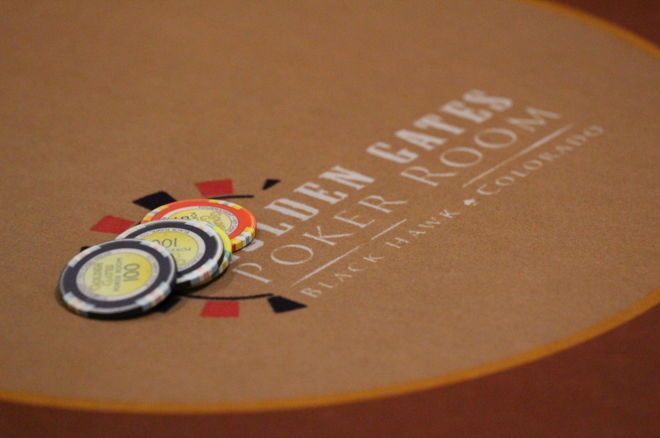
Poker strategy is a very trendy thing. Good players start to use a fancy new line and the rest of us slowly emulate it until it becomes standard practice. Often, we don't know why the play is good. We just think, "if it works for them, it will work for me."
This can lead us to misapply the play and do more harm than good. To avoid this pitfall, we should study these new lines in greater depth to understand why they work and when they should be used.
One recent trend I've noticed is what seems like an ever decreasing continuation bet size on dry boards. At one time, a c-bet of half the pot or more was considered standard. Then people started using one-third and one-quarter pot-sized c-bets. Recently, I've seen good players even advocate for one-fifth or one-sixth size c-bets in certain situations.
To investigate this strategy a little further, I decided to experiment with these small bets against PokerSnowie, the AI coaching and training software �� to find out how and why (and when) these small continuation bets work.
Almost every time I made one of these super small bets, Snowie disagreed with my sizing and suggested I should have used its recommended bet size in order to stay unexploitable. Surprisingly though, whenever the option for a smaller bet size was available, Snowie almost always showed that if I used the exploitably smaller bet size, my expected value went up.
For example, at a nine-handed tabled I opened A?10? from early position (under the gun + 1) to 2 big blinds from my 40 BB effective stack and got through everyone except the player in the big blind who called. The flop came K?10?7? and my opponent checked.
Snowie determined that the best c-bet size for me to use in this situation was half-pot as part of its overall unexploitable strategy. That bet had an expected value of 2.34 BB. That was less than the 2.51 BB EV of checking, so Snowie advised that I check back in this spot 100 percent of the time.
I realized that unlike Snowie, I did not have to worry about frequent check-raises in the passive games I play. This led me to believe that I should be betting with the smaller size much more frequently than Snowie suggested.
However, if I instead chose to use the smaller quarter-pot size bet option, Snowie would tell me that had an EV of 2.65 BB and that I should bet 100% of the time. Even though this bet was more profitable, Snowie considered this a problematic strategy because the smaller bet size would get raised both as a bluff and for thin value more often, and my hand could not stand up to that much pressure.
After seeing similar results in multiple hands, I realized that unlike Snowie, I did not have to worry about frequent check-raises in the passive games I play. This led me to believe that I should be betting with the smaller size much more frequently than Snowie suggested.
The alternative was to take the original advice and check back. When Snowie does that, it comfortably plays a well protected checking range against an opponent who is bluffing and value betting with close to optimal frequencies.
In practice, when I check back in situations like this, I reluctantly call the turn and fold the river against opponents who generally do not bluff or thin value bet often enough to warrant getting their strong river betting ranges paid off. That, or I bet the turn and river to get two streets of value from a player who would have happily paid off three.
The variation in the expected values of each decision also supports deviating from Snowie's advice. As stated, the expected values of checking, betting quarter-pot, or betting half-pot on the flop all ran close to around 2.5 BBs with only a difference of 0.31 BB between the best and worst options, which were all +EV.
When I checked back as suggested, the opponent would often lead into me for pot or more on the turn. Facing a pot-sized bet on the turn, I had a clear call, but now it was worth only 1.02 BB. Facing another pot-sized bet on the river, gave me unfortunate choices of folding for an EV of 0 BB, making a bad hero call for an EV of -1.63 BB, or attempting an ambitious bluff-raise with a maximum EV of -0.14 BB.
After checking back the flop as I was told, not only did all of my choices go from bad to worse, but the degree to which they varied increased exponentially. This opened the door for me to make catastrophic mistakes.
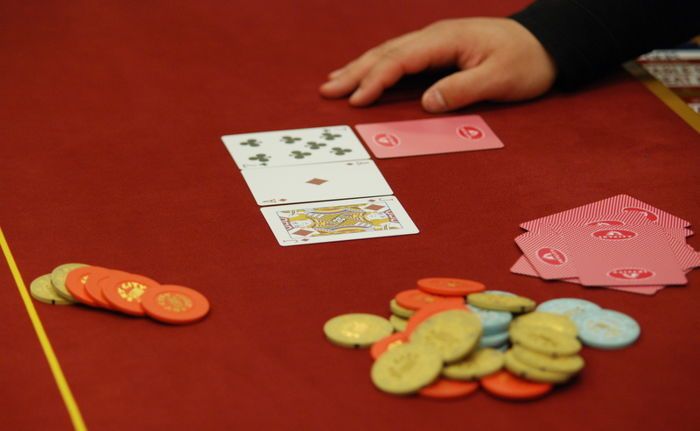
Moving back over to actual game play, when the threat of a prolific check-raiser is nonexistent on the flop, this turn-and-river nightmare can easily be avoided by c-betting the flop much more often and for a smaller size than what is optimal.
These bets are almost always profitable because as a bluff they deny equity to the weakest part of your opponent's air range, and as a value bet they get called by the weakest part of your opponent's pair range. Even when you make small bets that are suboptimal, they are usually still profitable. The same cannot be said for calling mistakes.
Additionally, these small bets severely cap your opponent's range since he would often choose to raise with his strongest hands like two pair or better when facing a quarter-pot sized c-bet. This can set them up for triple-barrel bluff-shoves on certain runouts that dramatically change the nuts. Many players would be hard pressed to call down with the weakest of their marginal holdings for their tournament lives in this situation.
Using the small c-bets in passive games is sort of a hack that allows you to play poker on "easy mode" when you are not sure that you are capable of making the right decisions in tough spots. In the meantime, you can focus on gathering reads. This information is what allows you to categorize players as maniacs against whom you can comfortably check back and then call their later bluffs, or nits against whom you can check back and comfortably fold your best bluff catchers when they decide to put chips into the pot.
Frequent small c-bets can help keep you effortlessly above water on flops and turns until you gather enough information to take the plunge and play rivers more profitably.

